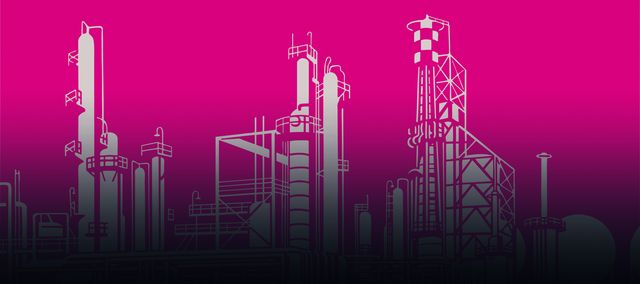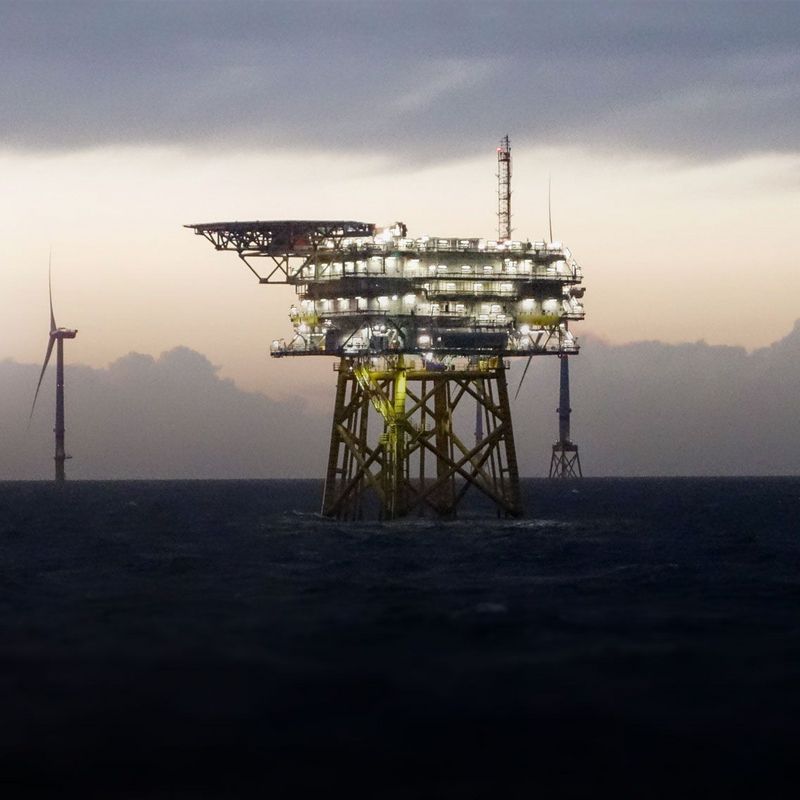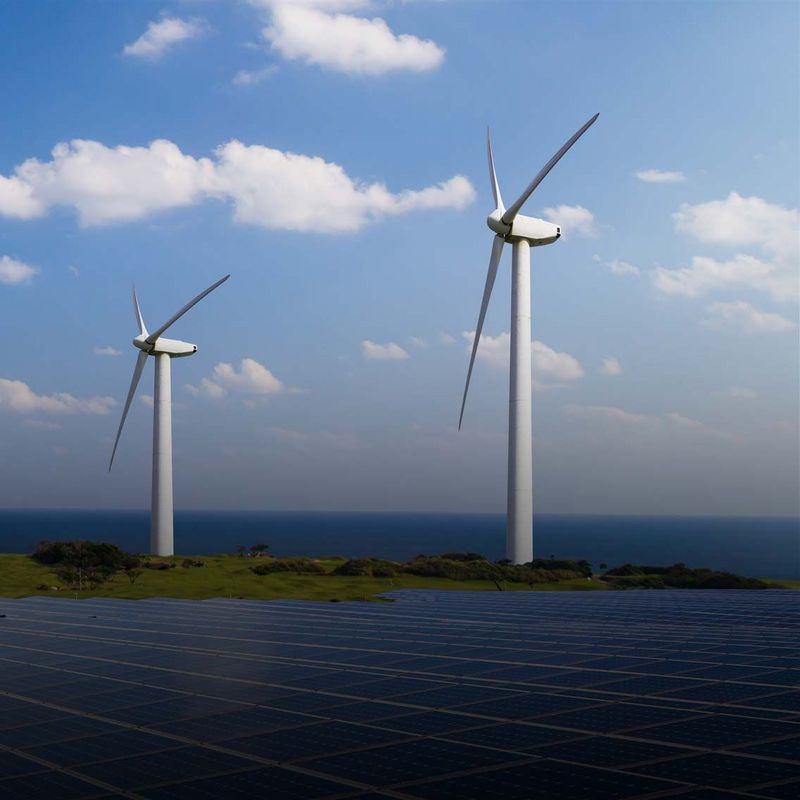11. February 2021
Hydrogen is being held up as a beacon of hope for more environmentally friendly transport. In many energy-hungry industrial sectors, this volatile gas is even regarded as a royal road to increased climate-friendliness to which there is simply no alternative. Steel manufacturers, chemical companies and refineries are keen to make their production more environmentally sound by using green electricity generated from hydrogen.
As in the story of David and Goliath or Tesla versus the world’s car-making giants, it’s sometimes the underdog who carries the greatest weight of expectation. This has certainly been true of hydrogen in recent years. “Hydrogen is the crude oil of tomorrow,” says Anja Karliczek with conviction. As far as the German Minister for Research is concerned, the smallest element in the universe is a multifunctional commodity for transport, heating and industry. As long as the hydrogen is produced using green technologies – that is, where the energy needed to split the water molecules is derived from green electricity. If experts deem battery-electric propulsion in cars to be the more energy-efficient and cost-effective option, the volatile gas could be used wherever the large and heavy batteries reach their limits – that is, in heavy-duty traffic on land, on water and in the air. Especially in industry, which, at around 20 percent, has the biggest carbon footprint in Germany after energy production and before transport. Here, ever greater hopes are being pinned on the first element of the periodic table.
© BP Europa SEDie bp Raffinerie in Lingen aus der Luft
Green instead of grey
20 billion normal cubic metres of hydrogen are produced annually in Germany alone – worldwide, the figure is 500 billion. Most of this is extracted from natural gas by steam reformation. The production of “grey” hydrogen releases a lot of CO2 – with all the known consequences for the global climate. Today, its largest industrial users include the oil companies: every refinery consumes several tonnes of hydrogen per hour to extract the sulphur from kerosene, diesel and petrol. In a pilot project in 2018, BP demonstrated that, in technical terms, grey hydrogen from natural gas can easily be replaced with the environmentally sound equivalent from green electricity. The Lingen refinery used 130,000 cubic metres of carbon-neutral hydrogen in the course of a month. A very good first outing, albeit one which still only covered a few percent of the overall amount required.
Even if all the hydrogen used in the refineries were one day to be derived from electrolysers, petrol and diesel would not become environmentally friendly overnight However, their production would at least be a little less burdensome on the climate. After all, the production of one tonne of grey hydrogen generates ten tonnes of CO2. BP now plans to install its first electrolysis plant in Lingen. The electricity is to be supplied by the offshore wind farms of Denmark’s Ørsted company in the North Sea. The plant is scheduled to go into operation in 2024 and will initially generate 50 megawatts (MW) of power, enough to replace 20 percent of the conventional hydrogen, according to BP. In the second phase, the capacity of the electrolysers in Lingen will be expanded to 150 MW.
BP’s competitor Shell is already one step further ahead. In 2020, the group commissioned an electrolyser for its Rhineland refinery in Wesseling near Cologne. With a capacity of 10 megawatts, this is currently the largest in the world, the company says. At 1,300 tonnes per year, however, it still produces less than one percent of the hydrogen required by the Wesseling refinery. In the next phase of the project, a 100 MW plant will be developed which could then cover around ten percent of the demand.
Basic molecule of the chemical industry
Interest in green hydrogen, which could also replace its grey equivalent in an initial step, is also growing in the chemical industry. For example, H&R Ölwerke Schindler in Hamburg is already desulphurising its special oils for the tyre, cosmetics and food industries using hydrogen from its own electrolyser.
Hydrogen is also required in especially enormous quantities for the production of basic chemicals. These include methanol, the basic constituent of formaldehyde, which is used, for example, to produce dyes and medicines. Also significant here is ammonia, one of the most widely produced chemicals in the world, which is mainly used in the fertiliser industry. Power-to-X is the principle by which electricity is converted into hydrogen and then into a synthetic gas or synthetic crude oil. This technology basically makes it possible to produce everything that is extracted from the earth today, from fuels and plastics to cosmetics.
Hydrogen instead of coking coal
In the energy-intensive steel industry, green hydrogen is even being held up as a key element in the industry’s attempts to meet its climate targets. Worldwide, the industry is responsible for seven percent of CO2 emissions. The main reason for this is coking coal, which is burnt in vast quantities during steel reduction. For every tonne of steel, almost two tonnes of CO2 escape into the atmosphere. As ThyssenKrupp has successfully demonstrated with tests in Essen, the coke can be replaced with hydrogen. The pioneer in this area, however, is Salzgitter AG, which launched a pilot project in 2016. In the summer of 2020, the company commissioned an electrolyser with a capacity of 720 kilowatts for its Salzgitter steelworks. The steel giant now intends to build the first iron ore direct reduction plant which can be operated flexibly with natural gas and hydrogen by 2022.
The idea behind the project, which is being funded by the federal government to the tune of five million euros is this: until such time as green hydrogen is available in sufficient quantities, it will be possible to operate the plant mainly with natural gas, which will in itself almost halve CO2 emissions. As and when the natural gas is completely replaced by green hydrogen, the carbon dioxide emissions will be reduced by 95 percent. Salzgitter AG intends to be managing its entire steel production with hydrogen by 2050.
This comes at a price, of course. The German steel industry association calculates that it will cost 30 billion euros to convert every steel mill in Germany to environmentally friendly production over the next 40 years. Using hydrogen will also increase the cost of making steel. According to a study by Agora Energiewende, a tonne of green steel would probably be two-thirds to twice as expensive again as today’s conventionally produced steel. From the experts’ point of view, this cost disadvantage could be offset, for example, by a quota for green steel and other low-carbon products and a carbon tax on products.
Strategy for more H2
Green hydrogen is currently available only in small quantities and at high cost. The German government wants to change this with its “National Hydrogen Strategy”, which was adopted in June 2020. A total of nine billion euros will go towards the subsidisation of hydrogen technologies – seven billion of which will go to the construction of a hydrogen infrastructure in Germany, with the remaining two billion being channelled into international partnerships based on this talented molecule. The hydrogen strategy has set the course for Germany to become the world number one in hydrogen technologies,” says Federal Minister for Economic Affairs Peter Altmaier. To promote the development of a strong domestic market, electrolysis plants with a total output of up to five gigawatts are to be built in Germany by 2030. Since the beginning of 2021, electrolysis plants have also been exempted from the levy imposed by German legislation on renewable energies, which has previously made the production of this great white hope among gases uneconomical.
But even if volumes rise and prices fall in the future, as production increases, green hydrogen will still be more expensive than its fossil-fuel-based predecessor, and its production will always require a lot of electricity. According to Agora Energiewende, an additional 74 terawatt-hours will be needed to decarbonise Germany’s steel industry – one third of the green electricity generated by wind, solar, water and biomass in Germany in 2019. For its part, if it is to reach carbon neutrality by 2050, the chemical industry assumes additional investments of around 45 billion euros and an explosive increase in its own appetite for electricity. By 2050, the industry’s energy demand is expected to increase from 54 to 628 terawatt-hours – more than the entire volume of electricity produced across Germany in 2020.
Hydrogen from the desert
Even if the currently stagnating expansion of renewables were to pick up considerable momentum in the coming years, it would not be possible for the local demand for hydrogen to be satisfied with green electricity from German production alone. As part of its hydrogen strategy, the German government therefore intends to establish partnerships with countries such as Chile, Australia and Morocco. The idea is for hydrogen to be produced in larger quantities and more cheaply in these wind- and sun-rich countries and imported from them into Germany. German and Australian researchers have also been asked to establish in a feasibility study what a hydrogen partnership, including transport infrastructure, might look like between these two industrialised countries.
In Morocco, the first project based on the promising molecule is already being initiated. At the end of 2020, the German Ministry of Development pledged a total of 90 million euros in loans to the government of the North African state for it to build the first large-scale hydrogen production plant in Africa. In the first stage of development, the electrolysers are to have a capacity of 100 megawatts The call for tenders for the pilot plant is scheduled for this year. The electrolyser in the desert is intended to prove that the economical production of green hydrogen is possible in partner countries –thereby also laying the foundation for further large-scale projects. If everything goes according to plan, there is much to suggest that this small molecule will finally be able to live up to its outsized expectations in the years to come.
Expertise in hydrogen
Without green hydrogen, it will be impossible to meet the energy transition and climate protection targets – this would also be out of the question for the TÜV NORD GROUP. The technology service provider is involved in various projects and in drawing up the regulations surrounding the multifunctional molecule. To push ahead with the rapid and sustainable development of the hydrogen economy, TÜV NORD has now teamed up with BBH and strategy consultancy Bingmann Pflüger International. Together, the experts are advising authorities, municipalities and industry on all aspects of hydrogen projects – from production, transport and storage through to the use of environmentally friendly H2.



